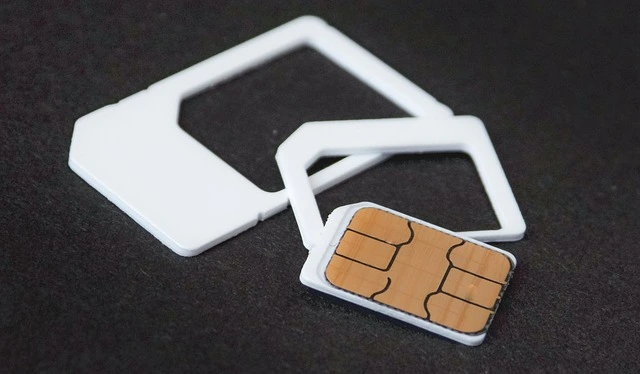Making the switch from a regular SIM card to an eSIM might sound complicated, but it’s actually pretty simple. Many people are choosing eSIMs because they’re more convenient and secure than regular SIM cards.
An eSIM is a digital SIM card that lives inside your phone. You don’t need to insert or remove anything from your device. Instead, everything happens through software. This means no more tiny plastic cards that you can lose or break.
If you’re thinking about making this change, you’re in the right place. This guide will walk you through everything you need to know about how to transfer sim to esim. We’ll cover both iPhone and Android devices, so no matter what phone you have, we’ve got you covered.
What is an eSIM and Why Should You Care?
Before we dive into the steps, let’s talk about what an eSIM actually is. The “e” stands for “embedded,” which means it’s built right into your phone. Unlike regular SIM cards that you can take out, an eSIM is permanent hardware in your device.
Here’s why people love eSIMs:
No More Lost SIM Cards: Since it’s built into your phone, you can’t lose it or forget it at home.
Switch Carriers Easily: You can change phone companies without waiting for a new SIM card in the mail.
Multiple Phone Numbers: Many phones can store several eSIM profiles, so you can have work and personal numbers on the same device.
Travel Made Simple: When you travel, you can add local carrier plans without buying new SIM cards.
Better Security: It’s much harder for someone to steal your eSIM compared to a regular SIM card.
Check if Your Phone Supports eSIM
Not all phones can use eSIM technology. Before you start the process of how to transfer sim to esim, you need to make sure your device supports it.
For iPhone Users
Most newer iPhones support eSIM. Here’s the complete list:
- iPhone 15 series (all models)
- iPhone 14 series (all models)
- iPhone 13 series (all models)
- iPhone 12 series (all models)
- iPhone 11 series (all models)
- iPhone XS, XS Max, and XR
- iPhone SE (2nd and 3rd generation)
To check if your iPhone has eSIM capability:
- Go to Settings
- Tap “General”
- Select “About”
- Look for “Available SIM” or “Digital SIM”
For Android Users
Many Android phones now support eSIM, but the list is growing all the time. Popular models include:
- Google Pixel 3 and newer
- Samsung Galaxy S20 and newer
- Samsung Galaxy Note 20 and newer
- Motorola Razr series
- OnePlus 11 and newer
To check on Android:
- Open Settings
- Look for “Network & Internet” or “Connections”
- Check if you see “Mobile Network” or “eSIM” options
Getting Ready: What You Need Before Starting
Before you begin the process of how to transfer sim to esim, make sure you have these things ready:
Contact Your Carrier: Not all phone companies offer eSIM services yet. Call them or check their website to make sure they support eSIM for your plan.
Stable Internet Connection: You’ll need Wi-Fi or cellular data to download your eSIM profile.
Account Information: Have your account details ready, including your phone number and any PINs or passwords.
Backup Your Data: While switching to eSIM shouldn’t affect your data, it’s always smart to back up your important files first.
Services like Billion Connect make this process much easier by providing clear instructions and support for multiple carriers worldwide.
How to Transfer SIM to eSIM on iPhone
Apple has made the process of how to transfer sim to esim pretty straightforward on iPhones. Here’s exactly what to do:
Method 1: Using Carrier Settings (Easiest Way)
- Open Settings: Find the Settings app on your home screen and tap it.
- Go to Cellular: Scroll down and tap on “Cellular” or “Mobile Data.”
- Add Cellular Plan: Tap “Add Cellular Plan” or “Add eSIM.”
- Choose Your Method: You might see options like “Transfer from Another iPhone” or “Use QR Code.” Pick the one that works for your situation.
- Follow the Prompts: Your iPhone will guide you through the rest of the steps.
Method 2: Using a QR Code
Many carriers provide QR codes to make the process of how to transfer sim to esim simple:
- Get Your QR Code: Contact your carrier to get an eSIM QR code. They might email it to you or show it on their website.
- Open Camera App: Point your iPhone’s camera at the QR code.
- Tap the Notification: When you see “Cellular Plan Detected,” tap on it.
- Add the Plan: Tap “Add Cellular Plan” and follow the instructions.
- Set Up Your Plan: Choose whether this will be your primary line or secondary line.
Method 3: Manual Entry
If QR codes don’t work, you can enter the information manually:
- Go to Settings > Cellular: Open your cellular settings.
- Add Cellular Plan: Tap to add a new plan.
- Enter Details Manually: Choose “Enter Details Manually” at the bottom of the screen.
- Input Information: Enter the activation code your carrier gave you.
How to Transfer SIM to eSIM on Android
Android phones handle eSIM setup a bit differently depending on your phone’s brand, but the basic steps are similar.
For Google Pixel Phones
- Open Settings: Find the Settings app in your app drawer.
- Network & Internet: Tap on “Network & Internet.”
- Mobile Network: Select “Mobile Network” or “SIM cards.”
- Add Network: Look for “Add Network” or “Add Carrier” and tap it.
- Download SIM: Choose “Download a SIM instead?” or “Add eSIM.”
- Scan QR Code: Use your camera to scan the QR code from your carrier.
For Samsung Galaxy Phones
- Settings Menu: Open the Settings app.
- Connections: Tap on “Connections.”
- SIM Card Manager: Find and select “SIM Card Manager.”
- Add Mobile Plan: Tap “Add Mobile Plan” or “Add eSIM.”
- Follow Instructions: Samsung will guide you through scanning a QR code or entering details manually.
General Android Steps
If your phone is different, the process of how to transfer sim to esim usually follows this pattern:
- Find Mobile Settings: Look for “Network,” “Connections,” or “Mobile” in your Settings.
- Look for eSIM Options: Search for “eSIM,” “Add Network,” or “Mobile Plans.”
- Add Your Plan: Use either a QR code or manual entry method.
- Activate: Follow your phone’s prompts to activate the new eSIM.
Common Problems and How to Fix Them
Sometimes things don’t go smoothly when you’re learning how to transfer sim to esim. Here are the most common issues and solutions:
Problem: QR Code Won’t Scan
Solution: Make sure you have good lighting and hold your phone steady. If it still won’t work, try the manual entry method instead.
Problem: “SIM Not Supported” Error
Solution: Double-check that your phone model supports eSIM. Also, make sure your carrier offers eSIM for your specific plan.
Problem: No Signal After Setup
Solution: Try restarting your phone. If that doesn’t work, check that you’ve selected the right line for calls and data in your settings.
Problem: Can’t Find eSIM Settings
Solution: Make sure your phone’s software is up to date. Older versions might not have eSIM options available.
Managing Multiple eSIMs
One of the coolest things about eSIMs is that you can have more than one on your phone. This is super helpful for people who travel or need separate work and personal numbers.
Setting Up Multiple Lines
The process of how to transfer sim to esim works the same way for additional lines:
- Add Another Plan: Go back to your cellular settings and add another plan.
- Choose Default Lines: Decide which line you want to use for calls, texts, and data by default.
- Label Your Lines: Give each line a name like “Work” or “Personal” so you can tell them apart.
Managing Your Lines
Both iPhone and Android let you:
- Turn lines on or off
- Choose which line to use for different contacts
- Set data preferences for each line
- Switch between lines for calls and texts
Billion Connect offers plans that work great for people who need multiple lines, whether for business or travel.
Tips for a Smooth Transition
Here are some expert tips to make your experience with how to transfer sim to esim as smooth as possible:
Keep Your Physical SIM for a Few Days: Don’t throw away your old SIM card right away. Keep it until you’re sure everything is working perfectly with your eSIM.
Test Everything: After setting up your eSIM, make sure you can make calls, send texts, and use data.
Update Your Contacts: Let important contacts know about any changes to your phone number or service.
Check Your Bill: Make sure your carrier has properly switched your account to eSIM and that you’re not being charged for both old and new services.
Save Your eSIM Details: Write down or screenshot the activation information in case you need to reinstall your eSIM later.
Security Benefits of eSIM
When you learn how to transfer sim to esim, you’re also upgrading your security. eSIMs are much harder for criminals to steal or clone compared to regular SIM cards.
Protection Against SIM Swapping: Since eSIMs can’t be physically removed, it’s much harder for someone to steal your phone number.
Remote Management: If your phone is lost or stolen, your carrier can deactivate the eSIM remotely.
Encrypted Profiles: eSIM profiles are encrypted and stored securely on your device.
The Future is eSIM
More and more people are choosing to learn how to transfer sim to esim because the technology keeps getting better. Phone makers are starting to build devices without physical SIM card slots at all.
iPhone 14 Changes: In the US, iPhone 14 models don’t have physical SIM card slots. They only work with eSIM.
Android Following: Many new Android phones are also moving toward eSIM-only designs.
Carrier Support Growing: Almost all major carriers now support eSIM, and smaller carriers are quickly adding support too.
Frequently Asked Questions
Can I switch back to a regular SIM card after using eSIM?
Yes, in most cases you can switch back to a physical SIM card if needed. Contact your carrier to request a regular SIM card with your phone number.
Will I lose my phone number when I switch?
No, you keep the same phone number when you learn how to transfer sim to esim. The number stays with your account, not with the type of SIM you use.
Does eSIM use more battery than regular SIM?
eSIM actually uses slightly less battery than physical SIM cards because there are fewer physical components involved.
Can I use eSIM while traveling internationally?
Yes, eSIM is great for travel. You can add local carrier plans without buying physical SIM cards in each country you visit.
What happens if I get a new phone?
When you get a new phone, you’ll need to transfer your eSIM profile to the new device. Your carrier can help you with this process.
Is eSIM more expensive than regular SIM?
Usually, eSIM costs the same as regular SIM card plans. Some carriers might charge a small fee for the initial setup, but monthly costs are typically identical.
Making the Switch: Your Next Steps
You are now prepared to make the shift now that you know how to transfer sim to esim. It may be hard to process, but once you start it is easy.
Always do the simple yet important step of checking with your carrier beforehand to ensure that they support it on your plan. Make sure you have all the information on your account ready and if you get stuck you should not hesitate to seek help with your problem.

Easily outweighing the reasons as to why to learn how to transfer sim to esim are the advantages of the eSIM technology. This will get you a higher level of security, convenience and you will be in a position to use more than one phone number under a single phone.
As much as you use an iPhone or Android gadget, simple steps will assist you in making the switch without a rave. It may be time-consuming, but make sure to be thorough, and in no time you will be reaping the benefits of eSIM technology.
Mobile technology is shifting towards eSIM and mastering how to transfer Sim to esim in present time gives you an edge over time. Go digital today and enjoy the portability and interoperability given by digital SIM technology.


